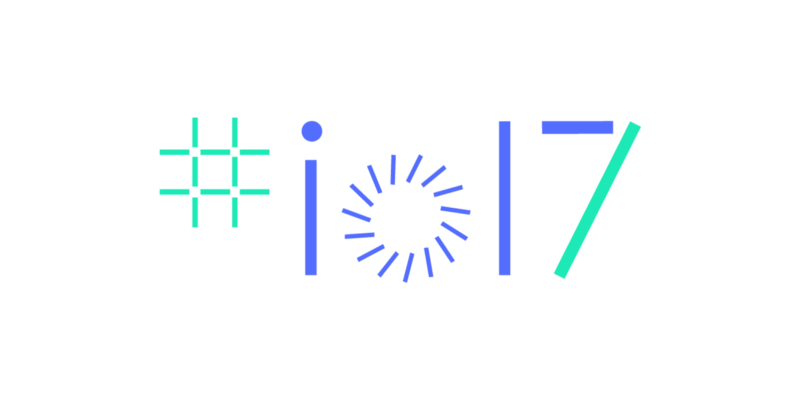by Aravind Putrevu
The most promising breakthroughs from Google I/O 2017

Google I/O is one of the biggest developer conferences. This year was particularly exciting. There were two keynotes: one from Google CEO Sundar Pichai, and another from Jason Titus, the Google’s vice president of developer products.
In this article I’ll summarize the major announcements from Google I/O 2017 and also share my own perspectives on them as a developer.
Let’s get started!

I liked the way they kicked off their event this year by showing their “The Story of an Idea” video clip. This symbolizes how, when one looks at taking an idea forward, they may face many obstacles. But finally when the world starts looking at the effort and hard work, that’s when those efforts really start to shine.
The keynote starts with Sundar describing prime products of Google and the scale at which those services are operated.
In the past few years, many of us haven’t gone a single day without using Google Search, Gmail, YouTube, and Android, or some other Google product. That shows the kind of engineering excellence Google owns in bringing people again and again to the same platform.
From Mobile First to AI First
The main competitors of Google might be leading in certain sectors such as Cloud and Social Media. But Google has an edge over them as it has much more of world’s data. All this data makes it much easier for them to integrate AI into their products.
As a result, today we see slew of new features added to each Google product without compromising on User experience.
“The more we can democratize access to AI technology, the sooner everyone will benefit.” — Sundar Pichai
Google Lens
Google is not only successful in bringing down the error rates for its speech recognition, but it’s actually nearing a typical human’s ability to understand speech. Today Google Home understands different voices in a home, and gives results accordingly.
Along similar lines, Google Lens will enable machines to look out and describe what they see.
Cloud Tensor Processing Unit (TPU)
As a machine learning enthusiast, I know how difficult it is today to train a machine learning model. So imagine a situation where there’s a huge data set and a machine learning model written. It’s not easy to train the model on any typical computer (like your laptop) with less computing power. For this, you need a machines with more processing power so you can perform these tasks in a cost-effective way.

Since a majority of cloud vendors charge based on time, cost to do the task increases as time increases. With a better underlying infrastructure, one can train the model with more data points in the given time.
Because the more a model gets trained on a wide variety of data, the more accurate the inferences become.
In this context Cloud TPU (2nd Gen TPU) is going to be a major innovation. With Cloud TPU integrated into Google Cloud Platform (GCP), we can expect that GCP can become a go-to place for all machine learning use-cases.
Google.ai
Google always talks about open-source and the democratization of its technology. It also does that for the ecosystem to thrive. Tensorflow is a good example of this.
Similarly, I believe Google.ai will serve as a one place to find all the AI work done by Google.
AutoML is crazy and shows how far Google can take AI. An example for this is neural net building another neural net. Remember we are still in 2017.
Applying machine learning advancements to the healthcare domain (Diabetic Retinopathy, Breast Cancer Diagnosis) reminds us that technology can change lives and help us live longer.
On that note, check out this video of a high school student’s effort to solve one of the toughest medical prediction problems.
On the fun side, have you heard of AutoDraw? Head over to it, you’ll get to see AI in action.
Google Assistant
Google Search remains Google’s main source of income.
Google Assistant is essentially Google Search — but it uses voice as its modality. By getting people to use Google Assistant, they’re getting users to search more often, and introducing more interesting features like making it more conversational, injecting it into all form factors, and finally opening it as a platform.

To learn more about developing “Actions on Google” take a look at this wonderful API.ai demo.
Google Home
Google Assistant more or less drives Google Home. It has positioned itself as competitor to the Amazon Alexa Platform.
Now we might assume that Google is playing catch-up to Amazon, but with the amount of data that Google has, and the daily user interaction with Google services, it may be able to out-class Alexa.
Many people will be watching to see how this battle turns out.
Here are some of Google Home’s core features:
- proactive assistance
- hands-free calling
- visual responses to a suitable nearby screen
- integration with Google’s existing services, like Maps, Chromecast, Calendar, and YouTube
Google Photos
Right from the day it is unveiled, Google Photos (previously known as Picasa) was a tremendous hit. Again, with the ability to analyze and organize information, Google is bringing up yet another feature: Suggested Sharing. This relieves of the time-intensive task of making photo albums and sharing them with loved ones. Now it’s just a single click.
Ditto with shared libraries and photo books. And there’s a clever integration with Google Lens.
Google’s applying machine learning to everything.
YouTube
Susan Wojcicki, CEO of YouTube, brings up an interesting demonstration of platform’s ability to solve social issues. It reminds me of the original promised power of social media.
Today, there’s no equivalent open video service to YouTube, which makes big money. Yet Google isn’t resting on its laurels. It’s introducing new features into YouTube in all possible form factors, be it your computer, smart phone, or TV.
Android
Oh! How can I forget it? Most popularly used mobile operating system in the world.
Google is going full speed ahead with a new version of Android. And it’s not just patching things — these are some major new features.
As an Android developer, I’d like to congratulate and thank the entire team of Android for yet another beautiful release.

Even though Android is popular in its own sense, it still has few issues, like battery life and operating system version fragmentation. But with every new release, Google is tackling these problems by making Android more robust.
Android O improves the user experience with features such as Picture in Picture, Notification Dots, Autofill, and Smart Text selection.
Out of which my favorite is Picture in Picture. Even though multi-window features were available in previous releases of Android, this time multi-window is mostly adaptable to a form factor of big sizes (including tablets).
On the machine learning side of things, I believe “TensorflowLite” and the new hardware supported neural network API will let any phone run simple models locally for faster benefits. Of course, we’ll need to learn how to use it properly so we don’t hamper user experience.
Other vitals like battery life, security, startup time, and stability are important, and are the real needs of the hour.
After working at a security company, I’ve seen first-hand how many Android apps do things in a sort of gray area, against the platform’s rules.
To find such apps, “Google Play Protect” comes into action and scans apps and makes sure things are in line. Google doesn’t tell you exactly what they look when they scan your apps, but in my view it would be a combination of many regular and behavioral Security Scan techniques.
They’ve also implemented boundary limits to services running in the background, which saves battery power.
Kotlin

Kotlin support was one completely unexpected announcement from Google. Kotlin is a JVM-based open source programming language, and it’s under active development.
But I would quickly highlight some main benefits:
- Android Studio support
- It’s interchangeable with Java
- More succinct code
You can join the official Kotlin Slack group to learn more about Kotlin here.
Android Go is yet another initiative aimed at improving Android’s presence in developing countries, where connectivity and data is a problem. Here’s their Youtube Go App.
Immersive Computing (VR/AR)
Basically, computing that works like more we do. This is a niche that is just picking up, and Google does not want to be a late comer. They introduced Daydream last year, and this time they’re already taking giant strides to solve crucial problems.
A standalone VR headset is an important achievement in the VR space because both Vive and Oculus need extra hardware to get the device working.
With Augmented Reality, your GPS can get your exact location. Then the Visual Positioning Service (VPS) can get you to the exact location of a home within a community.

Google expeditions can take students on immersive virtual journeys.
All Done! That’s a wrap.
Generally, we hear major product announcements from Google I/O. But this year there are no such announcements. Instead, there were a slew of updates and new features, and almost all products were enticing. Over and above, it shows that Google believes AI is the way forward.
Extra Resources
- Video recordings of all the sessions at Google I/O 2017.
- Code lab sessions conducted at Google I/O 2017
- Photos taken at the event.
About me
I’m an engineer working on a Cloud Security Product at McAfee LLC. I’m passionate about evangelizing tech, meeting developers and helping in solving their problems.
You can learn more about me here.